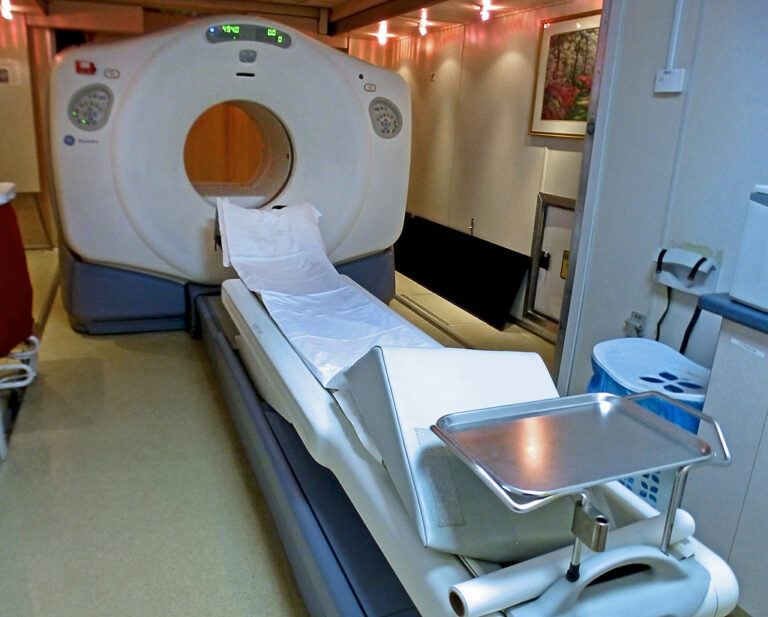Highlights
- Donanemab significantly slowed cognitive and functional decline for amyloid-positive early symptomatic Alzheimer’s disease patients, lowering their risk of disease progression; nearly half of participants at earlier stage of disease on donanemab had no clinical progression at 1 year
- Additional subpopulation analyses presented live showed that those study participants at earliest stage of disease had even greater benefit, with 60% slowing of decline compared to placebo
- Furthermore, treatment effect continued to increase relative to placebo over the course of the trial, even though many participants completed their course of therapy at 6 or 12 months, supporting limited duration dosing
- FDA submission completed in Q2; regulatory action expected by end of year
FDA Approval Expected for Third Alzheimer’s Drug
With yet a third new Alzheimer’s drug expected to be approved by the Food and Drug Administration (FDA), the field is beginning to show progress in the fight to slow the disease.
But the drugs work best for those in the earliest stages of Alzheimer’s, and other therapies will be needed to help those with advanced disease, according to Gil Rabinovici, MD, director of the UCSF Alzheimer’s Disease Research Center.
This is likely “just the opening chapter in a new era of molecular therapies for Alzheimer’s disease and related neurodegenerative disorders,” Rabinovici wrote in a July 17, 2023, JAMA editorial that is being published along with the results of the latest drug, donanemab. Rabinovici was not involved in the trial.
Monoclonal Antibody
Donanemab is a monoclonal antibody, like the two earlier Alzheimer’s drugs, aducanumab (Aduhelm) and lecanemab (Leqembi). These drugs attack plaques in the brain that are made of a protein called amyloid. They disrupt cell function and lead to the rapid spread of another protein called tau. Both amyloid and tau contribute to the development of Alzheimer’s disease.
The trial showed donanemab slowed cognitive decline by 35% compared with placebo in patients with low-to-intermediate levels of tau in the brain. These results are similar to those reported with Leqembi, which received FDA approval earlier this month. In the donanemab trial, patients also experienced a 40% lower risk of progressing from mild cognitive impairment to mild dementia, or from mild-to-moderate dementia.
Donanemab was better at removing amyloid plaques compared to Aduhelm and Leqembi. It reduced tau concentrations in the blood, but not in a key area of the brain.
While these results are encouraging, Rabinovici said an in-depth analysis still is needed to understand how these findings affect patient outcomes.
Not much benefit for those with more serious disease
Patients with more advanced disease showed little to no benefit compared to those who received the placebo. Together with the drug’s potentially serious side effects, this should push experts to “aim higher in developing more impactful and safer treatments,” wrote Rabinovici, who is affiliated with the UCSF Memory and Aging Center, departments of Neurology, Radiology and Biomedical Imaging, as well as the Weill Institute for Neurosciences.
Donanemab should be restricted to patients with low-to-intermediate levels of tau, which indicates mild disease. Other trials are evaluating how well monoclonal antibodies work in the earliest phase of the disease before symptoms appear.
ARIA
Like the two other new Alzheimer’s drugs, donanemab was associated with ARIA, amyloid-related imaging abnormalities that may include brain swelling and microbleeds. Serious ARIA occurred in 3.7% of patients, including three deaths. Risks were higher among patients with the APOE4 gene, which is related to an increased risk for Alzheimer’s. For that reason, Rabinovici said, genetic testing should be recommended prior to monoclonal antibody treatment.
While ARIA has generally been managed safely in clinical trials, Rabinovici urged caution as these drugs enter into real-world practice. He suggested limiting access to patients with normal pre-treatment MRIs, repeating MRIs at regular intervals and stopping or suspending treatment when ARIA occurs.
Given the anticipated high cost of donanemab and high patient demand, Rabinovici said it might make sense to limit the treatment duration to the time needed to clear amyloid plaques from the brain, which is the approach pioneered in the trial. He said this could “greatly enhance the feasibility of treatment for patients, clinicians, insurers and health systems.”
Full Results and Technical Data
Full results from the Phase 3 TRAILBLAZER-ALZ 2 study showed that donanemab significantly slowed cognitive and functional decline in people with early symptomatic Alzheimer’s disease (AD). The data were shared at the 2023 Alzheimer’s Association International Conference (AAIC) as a featured symposium and simultaneously published in the Journal of the American Medical Association (JAMA).
“The positive TRAILBLAZER-ALZ 2 data bring hope to people with Alzheimer’s disease who urgently need new treatment options. This is the first Phase 3 study of a disease-modifying therapy to replicate the positive clinical results observed in a previous study,” said Anne White, executive vice president of Eli Lilly and Company and president of Lilly Neuroscience. “If approved, we believe donanemab can provide clinically meaningful benefits for people with this disease and the possibility of completing their course of treatment as early as 6 months once their amyloid plaque is cleared. We must continue to remove any barriers in access to amyloid-targeting therapies and diagnostics in an already complex healthcare ecosystem for Alzheimer’s disease.”
Lilly previously announced that donanemab met the primary and all cognitive and functional secondary endpoints in the Phase 3 study. Submission to the U.S. FDA for traditional approval was completed last quarter with regulatory action expected by the end of the year. Submissions to other global regulators are currently underway, and the majority will be completed by year end.
The TRAILBLAZER-ALZ 2 results support Lilly’s application for regulatory approval to treat people with amyloid-positive early symptomatic Alzheimer’s disease (either mild cognitive impairment or mild dementia), regardless of their baseline level of tau. TRAILBLAZER-ALZ 2 enrolled participants with a broader range of cognitive scores and amyloid levels than other recent trials of amyloid plaque-targeting therapies. Participants in TRAILBLAZER-ALZ 2 were stratified by their level of tau, a predictive biomarker for disease progression, into either a low-medium tau group (sometimes referred to as intermediate tau) or a high tau group, which represented a later pathological stage of disease progression. All participants were then assessed over 18 months using scales that measure both cognition and function, including the integrated Alzheimer’s Disease Rating Scale (iADRS) and the Clinical Dementia Rating-Sum of Boxes (CDR-SB).
As previously reported, among participants with low-medium levels of tau (n=1182), donanemab treatment significantly slowed decline by 35% on iADRS and 36% on CDR-SB. Among all amyloid-positive early symptomatic AD study participants (n=1736), treatment with donanemab significantly slowed decline by 22% on iADRS and 29% on CDR-SB. Additional data presented at AAIC reinforced that regardless of baseline clinical or pathological stage of disease, treatment with donanemab resulted in cognitive and functional benefits relative to placebo:
- A pre-specified subpopulation analysis of low-medium tau participants based on clinical stage showed greater benefit of donanemab in those at earlier stage of disease:
- In participants with mild cognitive impairment (n=214), donanemab slowed decline by 60% on iADRS and 46% on CDR-SB (for those with mild dementia due to AD, n=534, donanemab slowed decline by 30% on iADRS and 38% on CDR-SB, respectively).
- Similarly, a post-hoc subgroup analysis of low-medium tau participants based on age showed greater benefit of donanemab in patients under the age of 75:
- In participants under the age of 75 (n=542), donanemab slowed decline by 48% on iADRS and 45% on CDR-SB.
- In participants aged 75 or greater (n=551), donanemab slowed decline by 25% on iADRS and 29% on CDR-SB.
- Results were similar across other subgroups, including participants who carried or did not carry an ApoE4 allele.
- The overall treatment effect of donanemab continued to grow throughout the trial, with the largest differences versus placebo seen at 18 months.
Gives More Time
“These results demonstrate that diagnosing and treating people earlier in the course of Alzheimer’s disease may lead to greater clinical benefit,” said Liana Apostolova, M.D., distinguished professor in Alzheimer’s Disease research and professor in neurology, radiology, medical and molecular genetics at Indiana University School of Medicine, where she is associate dean for Alzheimer’s disease research and directs the clinical core of the Alzheimer’s Disease Center. “The delay of disease progression over the course of the trial is significant and will give people more time to do such things that are meaningful to them.”
Donanemab specifically targets deposited amyloid plaque and has been shown to lead to plaque clearance in treated patients. Treatment with donanemab significantly reduced amyloid plaque levels regardless of baseline pathological stage of disease. Among all participants, treatment with donanemab reduced amyloid plaque on average by 84% at 18 months, compared with a 1% decrease for participants on placebo. Participants were able to stop taking donanemab once they achieved pre-defined criteria of amyloid plaque clearance.* Approximately half of participants met this threshold at 12 months and approximately seven of every ten participants reached it at 18 months.
In the earlier pathological stage of disease in participants with low-medium tau, treatment with donanemab resulted in 47% of participants with no progression at one year on the CDR-SB assessment, versus 29% on placebo. Those participants treated with donanemab also had a 39% lower risk of progressing to the next clinical stage of disease over the 18-month trial. This delay in progression meant that, on average, participants treated with donanemab had an additional 7.5 months before they reached the same level of cognitive and functional decline on CDR-SB compared to those on placebo.
“People living with early, symptomatic Alzheimer’s disease are still working, enjoying trips, sharing quality time with family – they want to feel like themselves, for longer,” said Mark Mintun, M.D., group vice president Neuroscience Research & Development at Lilly, and president of Avid Radiopharmaceuticals. “The results of this study reinforce the importance of diagnosing and treating disease sooner than we do today.”
Side Effects
The incidence of amyloid-related imaging abnormalities (ARIA) and infusion-related reactions was consistent with the previous TRAILBLAZER-ALZ study. ARIA occurs across the class of amyloid plaque clearing antibody therapies. It is most commonly observed as temporary swelling in an area or areas of the brain (ARIA-E) or as microhemorrhages or superficial siderosis (ARIA-H), in either case detected by MRI, and these may be serious and even fatal in some cases. This risk should be managed with careful observation, monitoring with MRIs, and appropriate actions if ARIA is detected. Serious infusion-related reactions and anaphylaxis were also observed.
| Adverse Events | Donanemab Group (n=853) | Placebo Group(n=874) |
| Any serious adverse event | 17.4 % | 15.8 % |
| Overall death | 1.9 % | 1.1 % |
| Death related to treatment | 0.4 % | 0.1 % |
| Infusion-related reaction (IRR) | 8.7 % | 0.5 % |
| Any ARIA (-E or -H) | 36.8 % | 14.9 % |
| ARIA-E (asymptomatic) | 17.9 % | 1.9 % |
| ARIA-E (symptomatic) | 6.1 % | 0.1 % |
| ARIA-H | 31.4 % | 13.6 % |
More Information
For full TRAILBLAZER-ALZ 2 results, see the publication in JAMA.
About TRAILBLAZER-ALZ 2 Study and the TRAILBLAZER-ALZ program
TRAILBLAZER-ALZ 2 (NCT04437511) is a Phase 3, double-blind, placebo-controlled study to evaluate the safety and efficacy of donanemab in participants ages 60-85 years with early symptomatic Alzheimer’s disease (MCI or mild dementia due to Alzheimer’s disease) with the presence of confirmed Alzheimer’s disease neuropathology. The trial enrolled 1736 participants, across 8 countries, selected based on cognitive assessments in conjunction with amyloid plaque imaging and tau staging by PET imaging.
Lilly previously announced and published in the New England Journal of Medicine (NEJM) results from the Phase 2 TRAILBLAZER-ALZ study in 2021. In addition, Lilly shared data from TRAILBLAZER-ALZ 4, the first active comparator study in early symptomatic Alzheimer’s disease, at the 15th Clinical Trials on Alzheimer’s Disease (CTAD) conference in 2022.
Lilly continues to study donanemab in multiple clinical trials, including TRAILBLAZER-ALZ 3, which is focused on preventing symptomatic Alzheimer’s disease in participants with preclinical AD; TRAILBLAZER-ALZ 5, a registration trial for early symptomatic Alzheimer’s disease currently enrolling in China; and TRAILBLAZER-ALZ 6, which is focused on expanding our understanding of ARIA through novel MRI sequences, blood-based biomarkers, and different dosing regimens of donanemab.
About Lilly
Lilly unites caring with discovery to create medicines that make life better for people around the world. We’ve been pioneering life-changing discoveries for nearly 150 years, and today our medicines help more than 51 million people across the globe. Harnessing the power of biotechnology, chemistry and genetic medicine, our scientists are urgently advancing new discoveries to solve some of the world’s most significant health challenges, redefining diabetes care, treating obesity and curtailing its most devastating long-term effects, advancing the fight against Alzheimer’s disease, providing solutions to some of the most debilitating immune system disorders, and transforming the most difficult-to-treat cancers into manageable diseases. With each step toward a healthier world, we’re motivated by one thing: making life better for millions more people. That includes delivering innovative clinical trials that reflect the diversity of our world and working to ensure our medicines are accessible and affordable. To learn more, visit Lilly.com and Lilly.com/newsroom or follow us on Facebook, Instagram, Twitter and LinkedIn. P-LLY
* Participants completed their course of treatment with donanemab once they reached a pre-defined level of plaque clearance. Average baseline amyloid levels were ~100 Centiloids for participants with early symptomatic Alzheimer’s disease.
Funding: Rabinovici is supported by NIH P30-AG062422, R35-AG072362, U01-AG057195, R56-AG075744 and Alzheimer’s Association ZEN-21-848216. La Joie is supported by NIH P30-AG062422, K99AG065501, and Alzheimer’s Association AARG-22-926899.











